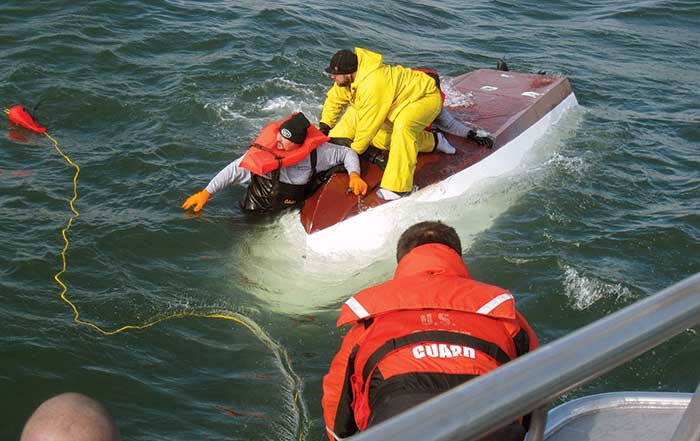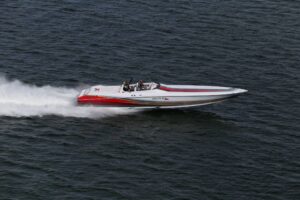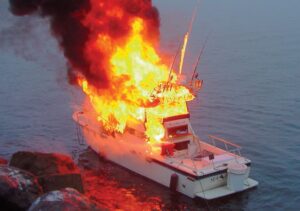The worst-case scenario for anyone employed in the maritime industry is a ship sinking or capsizing. Learn more about boat capsizing and what to do if it occurs by reading this article.
Although it doesn’t happen frequently, the worst can happen when you are on the water and your boat capsizes, endangering the safety of both you and your passengers. You must be ready for emergencies in advance in order to handle them effectively. Then, as a result of knowing what actions to take beforehand, you should be prepared to act when an emergency arises.
What Causes a Boat to Capsize?
Ship capsizing occurs when a vessel at sea lists to one side to such an extent that it cannot regain its original position, making it unsafe for the crew and machinery onboard.
Read More: What Should You Do If Your Boat Capsizes But Remains Afloat?
Media and news reports on fatal accidents serve as a reminder that even modern ships can capsize under certain circumstances. There are numerous reasons for this, even though it may seem impossible that such engineering marvels could be overcome. Ships capsize most frequently as a result of negligence and human error. A ship’s stability may occasionally be compromised by inclement weather and thunderstorms.
Free Surface Effect
Large free surfaces, caused by slack tanks and improper tank subdivisions (no longitudinal divisions), reduce the metacentric height and increase the risk of capsizing, especially if GM (metacentric) is lower (Ro-Ro vessel).
Due to the significant free surface effect, some tanker vessels with no longitudinal bulkhead in the cargo tank are more likely to capsize. This is especially true when the ship is heavily loaded in bad weather, which allows a significant amount of water to come on deck. If proper drainage is not provided in these circumstances, the risk of capsizing dramatically rises.
Shifting of Cargo
Shifting cargo on a ship may cause it to be heavily lifted, which increases progressive rolling and increases the risk of the ship capsizing.
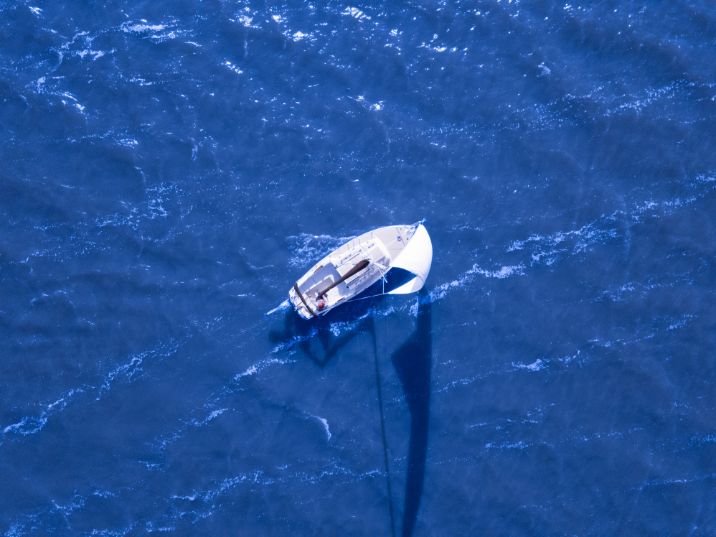
The consignment must be securely fastened. This can be prevented as well with appropriate ship design, for example. In bulk carriers, the presence of hopper tanks reduces cargo shifting.
Nature of Cargo
Because of their hygroscopic nature, some bulk cargo can absorb moisture. The dry cargo behaves like liquid cargo when the moisture content exceeds a certain threshold, causing a high free surface effect or shift of cargo and potentially dangerous list and capsize for the vessel.
Collision With Other Ships and Grounding
In shallow waters, a cargo ship could run into other boats, piers, reefs, and bridges. This circumstance can be avoided with proper piloting and navigation. Accidents can still occur, especially in crowded ports and harbors. As a strong collision can crack the vessel’s hull, such accidents also cause enormous financial loss.
There is a virtual rise in the center of gravity if the ship runs aground, particularly at a location of the central line, and subsequently if the water level drops.
The vessel may capsize if this makes metacentric height negative. Due diligence is necessary to prevent grounding because of this.
Flooding
The ship will lose buoyancy if it floods for any reason, whether internal or external. If this loss exceeds the vessel’s reserve buoyancy, it will cause the capsize. As a result, proper leakproof piping systems, watertight and weathertight hull integrity, should always be maintained.
Heavy Weather Damage
There will be a loss of buoyancy if there is significant weather damage that causes progressive flooding. The ship will capsize if this loss exceeds the reserve buoyancy. In order to avoid severe weather, proper weather routing must be used.
Fire
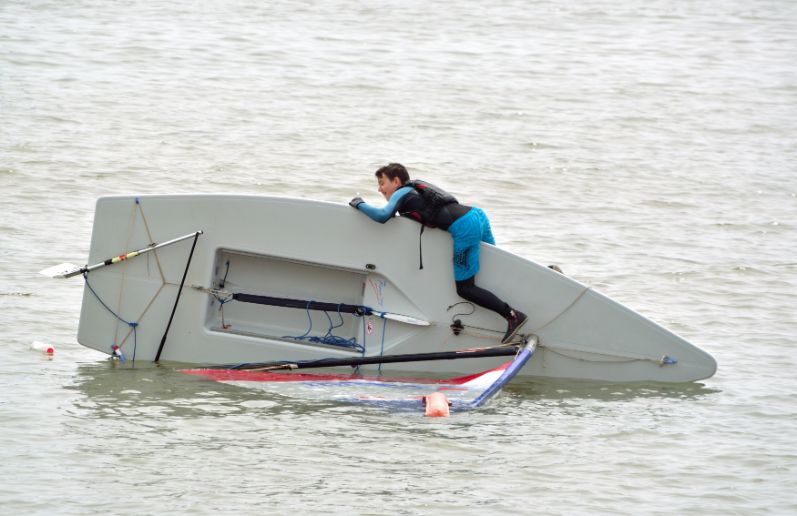
When using fire pumps to fight a fire on a ship, especially one with higher decks, the weight that is added could significantly reduce GM and raise the “G” center of gravity, which could cause the ship to capsize. When battling a fire, keep this in mind.
Synchronous Rolling
Each ship has a natural rolling period that is directly inversely correlated with the square root of the metacentric height and directly correlated with the ship’s beam.
The ship won’t have time to right itself before the next wave hits if it encounters a series of swells with wave periods that match the rolling of the ship. This circumstance has the potential to cause the vessel to capsize if it is not corrected. To prevent the negative effects of synchronous rolling, the ship’s speed and direction can be checked and changed as needed.
How to Proceed If Your Boat Does Capsize?
It’s still crucial to know what to do if your boat capsizes even after we’ve discussed the risks of capsizing that each boat faces and how you can avoid these risks.
When a ship capsizes, the first thing you should do is check the passengers to make sure no one is hurt.
Find a life jacket or personal flotation device (PFD) and put it on if you made the error of not doing so. If you are unable to put it on, hold onto it while asking the other passengers to do the same.
If your boat is still afloat, staying with it is the most crucial thing you can do. This significantly raises your chances of being saved by other boaters or the coast guard rescue teams. For instance, finding an inverted hull in the water is much simpler for someone flying over in a helicopter than for someone floating in the vast ocean.
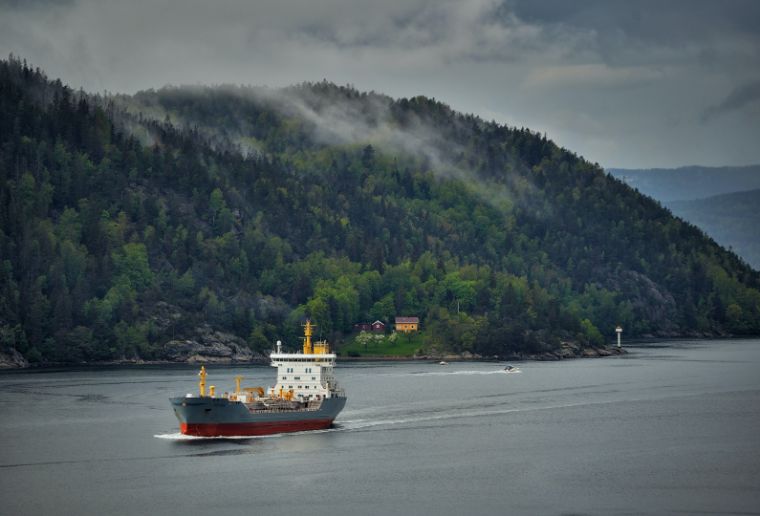
Getting as many supplies as you can from the capsized boat, including flares, distress signals, and extra flotation devices, is another suggestion. In order to make yourself more visible to those looking for you, find anything that floats and tether it to the boat. To help spotters, another tactic is to throw some objects into the water to create a debris field.
To lessen exposure to the water if the boat is still afloat, try to climb onto the hull. 25 times faster than air, water absorbs body heat. You and the other passengers must congregate to share warmth in order to stay warm and prevent hypothermia.
Remember not to attempt to swim to shore if you are more than 100 meters away from it. Waiting to be rescued while remaining with your group on the boat is safer.
How to Prevent Ships from Capsizing?
All of the aforementioned factors could cause a ship to capsize, but many of them can be prevented by taking certain safety measures. When navigating through inclement weather and rough seas, the crew must be extra cautious. They must also perform frequent ship inspections to make sure there are no leaks or mechanical issues.
Careful navigation can help you stay clear of collisions. Accidents frequently result from misunderstandings between captains and crew. To prevent confusion and misunderstandings during a crisis, this should be handled and tasks assigned to each person in advance.
Only when cargo is improperly stored and secured does shifting become a problem. So, before sailing, it should be fixed in place. If ships receive routine maintenance and have functional emergency equipment that can spot leaks, flooding can be easily avoided.
We can infer that human error and negligence account for the majority of shipwrecks. Accidents frequently do not result from abrasive weather or poor visibility brought on by dense fog, despite the possibility that these conditions are a factor.
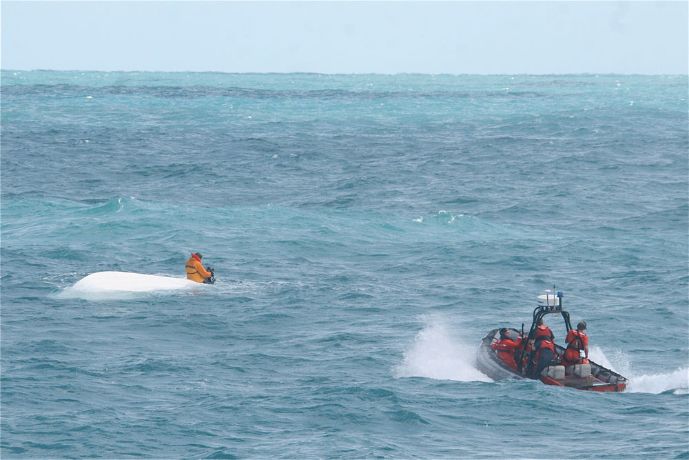
Which Boats Are More Likely to Capsize?
Most capsizings occur in small boats. Nearly 10% of the boats were 8 feet or shorter, mostly dinghies, and capsizing here frequently didn’t result in much damage. However, the 15–19 footers made up the largest group, accounting for 41% of all capsizes, according to a BoatUS study.
These vessels were frequently fishing vessels with large, difficult-to-drain cockpits that occasionally operated inclement weather and occasionally carried too much cargo.
Twenty-four percent of all boats fall into the 20–24-foot category, which is the next most prevalent group. Half of these 22–foot outboard-powered boats. Generally speaking, larger boats are more stable and capsize less frequently, though there have been a few over 38 feet that have done so.
FAQs
How Do You Get Out of a Capsized Boat?
When exiting a capsized boat, extreme caution must be taken. Wear life jackets or board a life raft first. If you are unable to do so, try holding onto something and staying in the water until assistance arrives.
How Do Ships Survive Big Waves?
Ships have strong engines that allow them to move forward without being tossed around by the waves. Therefore, in order to navigate the waves safely, a vessel should maintain a bow pointing toward them.
Conclusion
When you are out on the water in your preferred boat, it is simple to feel invincible. However, it is crucial to pay attention to your and your passengers’ safety, especially when there is a chance of capsizing. Your boat’s stability can be severely impacted by excess or unbalanced weight. Now, you have the knowledge of boat capsizing and what you can do at that time.

